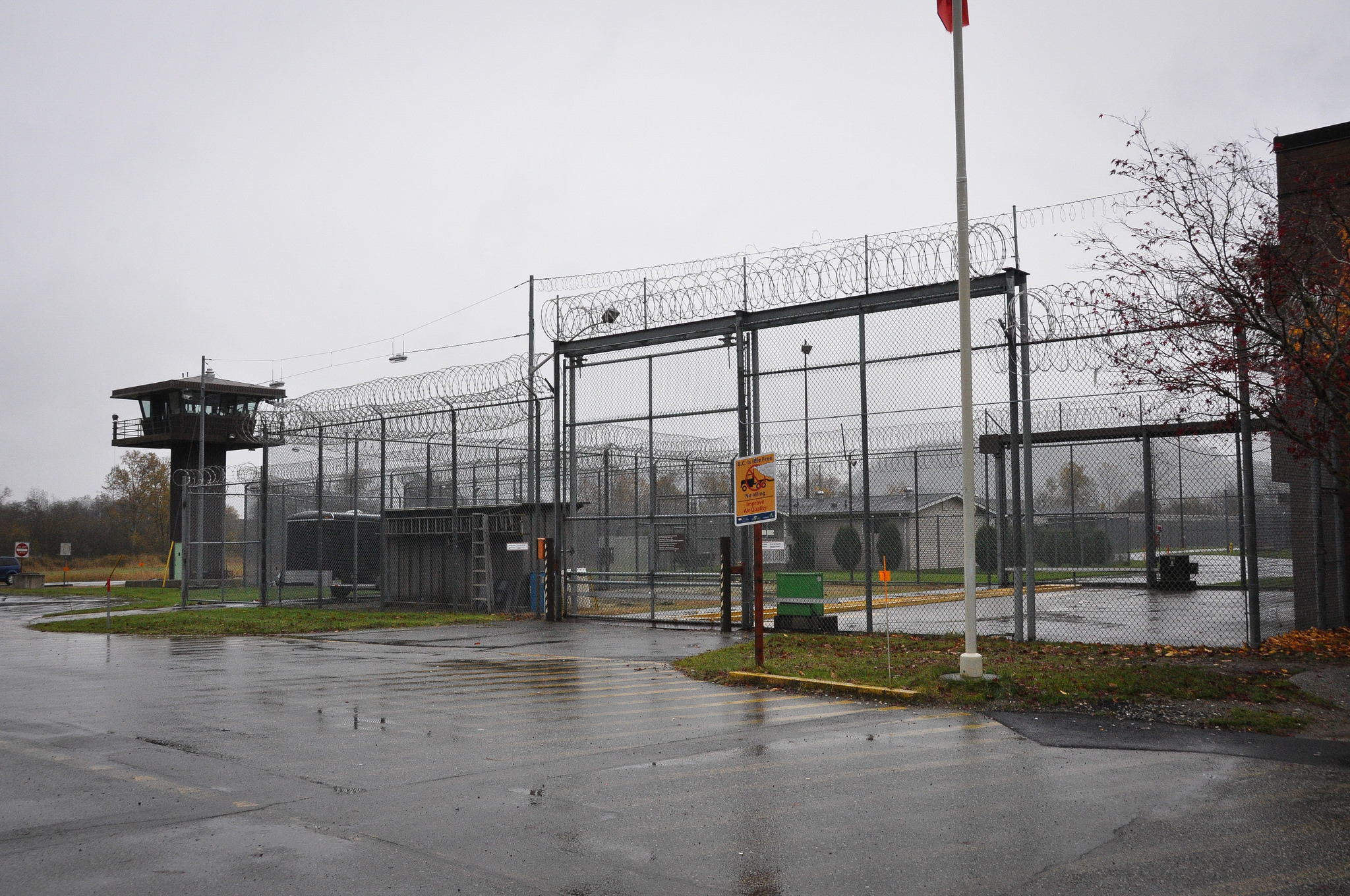Browse "Things"
-
Article
Michael Wayne McGray Case
Michael Wayne McGray once boasted of being Canada’s worst serial killer. He was convicted of seven homicides but claimed to have committed as many as 11 other murders in Canada and the United States between 1985 and 1998.
"https://d2ttikhf7xbzbs.cloudfront.net/media/media/165a58ff-b1ec-45d1-a858-6b40fb87d461.jpg" // resources/views/front/categories/view.blade.php
https://d2ttikhf7xbzbs.cloudfront.net/media/media/165a58ff-b1ec-45d1-a858-6b40fb87d461.jpg
-
Article
Michif
Michif is a language spoken by Métis peoples mostly in parts of Manitoba, Saskatchewan, North Dakota and Montana. Michif is mainly a combination of Cree and French, but the language also borrows from English and other Indigenous languages, including Ojibwe. Michif is considered an endangered language. In 2021 Statistics Canada reported that 1,845 people identified as Michif speakers. While Michif is the most commonly spoken Métis language, it is not the only one; others include: French Cree, French Michif, Bungi and Brayet.
"https://d2ttikhf7xbzbs.cloudfront.net/media/media/8422126e-7f18-4afa-bcb5-87c5f1e6825a.jpg" // resources/views/front/categories/view.blade.php
https://d2ttikhf7xbzbs.cloudfront.net/media/media/8422126e-7f18-4afa-bcb5-87c5f1e6825a.jpg
-
Article
Michilimackinac Island Treaty No.1 (1781)
In May 1781, the Anishinaabeg (Chippewa/Ojibwe) of the Straits of Mackinac region deeded Mackinac Island to the British (see also Upper Canada Land Surrenders). The treaty was recorded both in writing and in wampum. It utilized Anishinaabeg and British legal traditions to confirm the transfer of the island’s ownership to the British Crown. This agreement confirmed British use and occupancy of the island where a new fortification and village were under construction.
"https://d2ttikhf7xbzbs.cloudfront.net/FortMackinac.jpg" // resources/views/front/categories/view.blade.php
https://d2ttikhf7xbzbs.cloudfront.net/FortMackinac.jpg
-
"https://development.thecanadianencyclopedia.ca/images/tce_placeholder.jpg?v=e9dca980c9bdb3aa11e832e7ea94f5d9" // resources/views/front/categories/view.blade.php
https://development.thecanadianencyclopedia.ca/images/tce_placeholder.jpg?v=e9dca980c9bdb3aa11e832e7ea94f5d9
-
Article
Microeconomics
Microeconomics is a field of economics that studies the behaviour of individuals and business firms in allocating scarce resources. In contrast, macroeconomics studies the economy as a whole and looks at issues such as employment, inflation, government deficits and international trade. Like all fields of economics, microeconomic research consists of forming theories and testing those theories using economic data. Microeconomics has a long history that dates back to the very beginning of economics as a discipline. Much of microeconomic theory is premised on the notion of individuals as rational actors aiming to maximize their utility, or their satisfaction with goods and services. More recently, research in behavioural economics has combined insights from economics and psychology to challenge these assumptions.
"https://development.thecanadianencyclopedia.ca/images/tce_placeholder.jpg?v=e9dca980c9bdb3aa11e832e7ea94f5d9" // resources/views/front/categories/view.blade.php
https://development.thecanadianencyclopedia.ca/images/tce_placeholder.jpg?v=e9dca980c9bdb3aa11e832e7ea94f5d9
-
Macleans
Microsoft Buys into Rogers
Call it convergence. Bill Gates, in Toronto last fall for the first time in a couple of years, runs into Ted Rogers in the middle of the lobby of the Royal York Hotel. Rogers, who would love to collaborate with Gates's gigantic Microsoft Corp.This article was originally published in Maclean's Magazine on July 26, 1999
"https://development.thecanadianencyclopedia.ca/images/tce_placeholder.jpg?v=e9dca980c9bdb3aa11e832e7ea94f5d9" // resources/views/front/categories/view.blade.php
https://development.thecanadianencyclopedia.ca/images/tce_placeholder.jpg?v=e9dca980c9bdb3aa11e832e7ea94f5d9
-
Article
Microsoft Canada Inc
Microsoft Canada Inc is the Canadian subsidiary of Microsoft Corporation, a US-based computer products, services and software company founded by Bill Gates and Paul Allen in 1975. The Canadian arm was established in 1985 and headquartered in Mississauga, Ontario.
"https://development.thecanadianencyclopedia.ca/images/tce_placeholder.jpg?v=e9dca980c9bdb3aa11e832e7ea94f5d9" // resources/views/front/categories/view.blade.php
https://development.thecanadianencyclopedia.ca/images/tce_placeholder.jpg?v=e9dca980c9bdb3aa11e832e7ea94f5d9
-
Macleans
Microsoft Declared a Monopoly
You can tell a lot about Bill Gates' state of mind from the way he dresses. Much of the time, the chairman of Microsoft Corp. looks as though he's just rolled out of bed - his clothes are casual and rumpled, his hair is uncombed and his shoulders are speckled with dandruff.This article was originally published in Maclean's Magazine on April 17, 2000
"https://development.thecanadianencyclopedia.ca/images/tce_placeholder.jpg?v=e9dca980c9bdb3aa11e832e7ea94f5d9" // resources/views/front/categories/view.blade.php
https://development.thecanadianencyclopedia.ca/images/tce_placeholder.jpg?v=e9dca980c9bdb3aa11e832e7ea94f5d9
-
Macleans
Microsoft Rescues Apple
They just have no taste. They dont think of original ideas. - Steven Jobs of Apple Computer Inc. on Bill Gatess Microsoft Corp.This article was originally published in Maclean's Magazine on August 18, 1997
"https://development.thecanadianencyclopedia.ca/images/tce_placeholder.jpg?v=e9dca980c9bdb3aa11e832e7ea94f5d9" // resources/views/front/categories/view.blade.php
https://development.thecanadianencyclopedia.ca/images/tce_placeholder.jpg?v=e9dca980c9bdb3aa11e832e7ea94f5d9
-
Macleans
Microsoft Under Siege
The man is clearly frightened. Insisting on anonymity, he lowers his voice and lets loose a stream of criticism. As one of Canada's largest sellers of desktop computers, he rails against the "massive power" of Microsoft Corp.This article was originally published in Maclean's Magazine on June 1, 1998
"https://development.thecanadianencyclopedia.ca/images/tce_placeholder.jpg?v=e9dca980c9bdb3aa11e832e7ea94f5d9" // resources/views/front/categories/view.blade.php
https://development.thecanadianencyclopedia.ca/images/tce_placeholder.jpg?v=e9dca980c9bdb3aa11e832e7ea94f5d9
-
Article
Middle Power
In international relations, the term middle power refers to a state that wields less influence on the world stage than a superpower. As the term suggests, middle powers fall in the middle of the scale measuring a country’s international influence. Where superpowers have great influence over other countries, middle powers have moderate influence over international events. Canada was considered to be a middle power during the postwar period — from 1945 until about 1960. Though Canada was not as powerful or prominent as the United Kingdom or the United States during this time, it was an international player that influenced events through moral leadership, peacekeeping and conflict mediation.
"https://d2ttikhf7xbzbs.cloudfront.net/media/media/a8f651d1-144a-49a7-af14-dc0c180d3168.jpg" // resources/views/front/categories/view.blade.php
https://d2ttikhf7xbzbs.cloudfront.net/media/media/a8f651d1-144a-49a7-af14-dc0c180d3168.jpg
-
Article
Midewiwin
Midewiwin, or Grand Medicine Society, is a spiritual society found historically among the Algonquian of the Upper Great Lakes (Anishinaabe), northern prairies and eastern subarctic. Once widespread, the Midewiwin became less prevalent after the arrival of Europeans in the 18th and 19th centuries. Today, the largest Midewiwin societies are found in parts of Ontario, Manitoba, Wisconsin and Minnesota.
"https://d2ttikhf7xbzbs.cloudfront.net/midewiwin.jpg" // resources/views/front/categories/view.blade.php
https://d2ttikhf7xbzbs.cloudfront.net/midewiwin.jpg
-
Article
Midge
Midges are small, slender-bodied flies with long antennae, belonging to various families. Three families are especially important: non-biting midges (Chironomidae), biting midges (Ceratopogonidae, also called no-see-ums), and gall midges (Cecidomyiidae). In Canada, there are more than 1,300 named species of midges from these groups, and scientists expect at least as many more live here. The larvae of most non-biting and biting midges are aquatic, while most larval gall midges live and feed inside of growths on plant tissues. Midges are found all across Canada and in a variety of habitats.
"https://d2ttikhf7xbzbs.cloudfront.net/media/new_article_images/Midge/NonBitingMidge.jpg" // resources/views/front/categories/view.blade.php
https://d2ttikhf7xbzbs.cloudfront.net/media/new_article_images/Midge/NonBitingMidge.jpg
-
Article
Midnight Sun
Midnight Sun In the Arctic in the summer, the sun shines all night long. Robert W. SERVICE had this in mind when he used the phrase in his ballad "The Cremation of Sam McGee" (1907). The expression "land of the
"https://development.thecanadianencyclopedia.ca/images/tce_placeholder.jpg?v=e9dca980c9bdb3aa11e832e7ea94f5d9" // resources/views/front/categories/view.blade.php
https://development.thecanadianencyclopedia.ca/images/tce_placeholder.jpg?v=e9dca980c9bdb3aa11e832e7ea94f5d9
-
Article
Migration
Migration is defined restrictively as a regular movement between alternate sites, one of which is usually a breeding location.
"https://d2ttikhf7xbzbs.cloudfront.net/media/media/57646e15-f83e-46df-a681-c7f1214f0325.jpg" // resources/views/front/categories/view.blade.php
https://d2ttikhf7xbzbs.cloudfront.net/media/media/57646e15-f83e-46df-a681-c7f1214f0325.jpg
